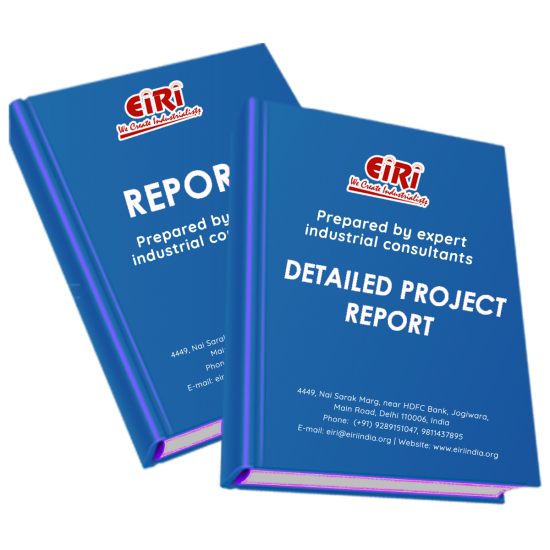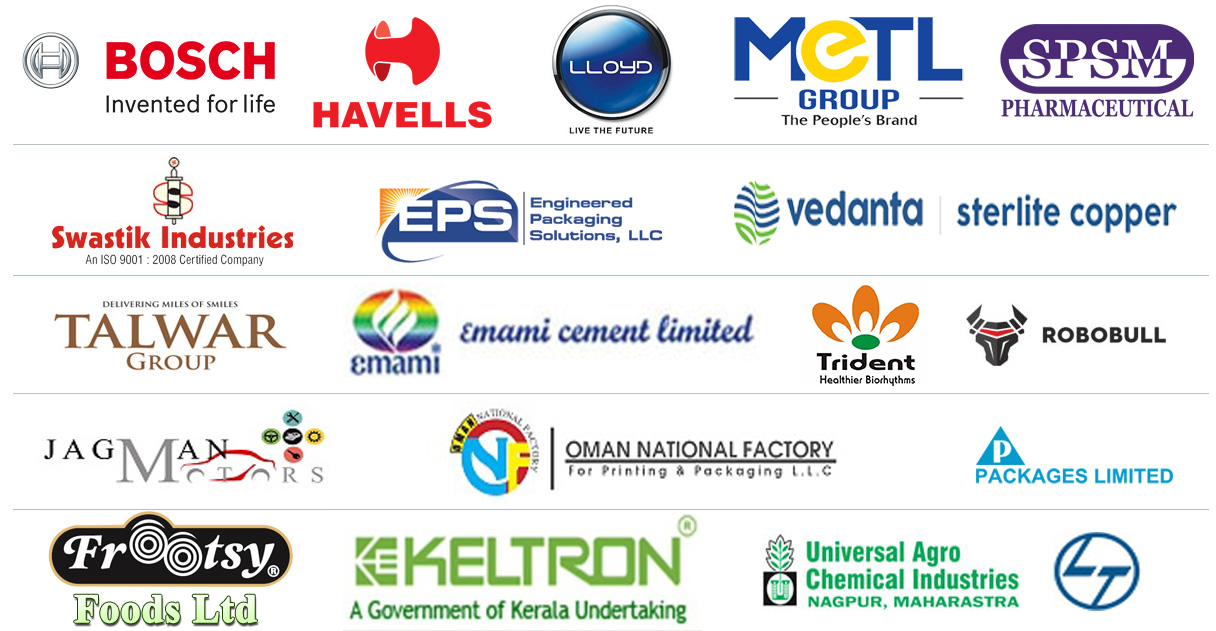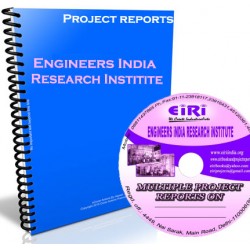ALUMINIUM PIPE (SEAMLESS EXTRUDED)

- More than 45 years of experience
- Managed by expert industrial consultants
- ISO 9001-2015 Certified
- Registered under MSME, UAM No: DL01E0012000
- 24/5 Research Support
Get your quesries resolved from an industry expert. Ask your queries before report or book purchase. - Custom Research Service
Speak to the our consultant to design an exclusive study to serve your research needs. - Quality Assurance
All reports are prepared by highly qualified consultants & verified by a panel of experts. - Information Security
Your personal & confidential information is safe & secure.
ALUMINIUM PIPE (SEAMLESS EXTRUDED)
EIRI/EDPR 4806 3027 JC XL
INTRODUCTION
ABOUT ALUMINUM
Aluminum is the most abundant mineral in the earth's crust, although it does not typically appear in its pure form in nature. Aluminum is derived from bauxite, a mineral mined in several parts of the world, and it was not until 1888 that an economically feasible process was developed for the commercial production of aluminum.
The mined bauxite is crushed and sprayed with water. Clay and silica are removed as by-products and the remaining bauxite is kiln-dried, mixed with soda ash and lime. The resulting mixture undergoes a number of processing steps before being heated in a calcinating kiln. The resultant material is alumina, a powdery chemical combination of oxygen and aluminum.
To yield the aluminum that provides the raw material for the extrusion process, alumina must go first through a smelting and then through an alloying process, during which minor quantities of alloying elements like copper, magnesium, silicon and manganese are added to create specific material properties.
Aluminium extrusion refers to a process that transforms aluminium alloy into objects for many uses with a definitive cross-sectional profile. This technique involves heating aluminium billets and forcing them through a die to create various shapes, such as rods, bars, and tubes. The versatility as well as durability of aluminium make it an ideal material for extrusion, contributing significantly to industries like construction, automotive, aerospace, and consumer goods. One of the primary advantages of aluminium extrusion is its ability to create complex cross-sections that are both strong and lightweight, which are essential qualities in modern engineering and design. Additionally, extruded aluminium products are suitable for both functional and aesthetic applications.
Extrusion is a plastic deformation process in which a block of metal (billet) is forced to flow by compression through the die opening of a smaller cross-sectional area than that of the original billet Extrusion is an indirect-compression process. Indirect-compressive forces are developed by the reaction of the workpiece (billet) with the container and die; these forces reach high values. The reaction of the billet with the container and die results in high compressive stresses that are effective in reducing the cracking of the billet material during primary breakdown from the billet . Extrusion is the best method for breaking down the cast structure of the billet because the billet is subjected to compressive forces only.
Extrusion can be cold or hot, depending on the alloy and the method used. In hot extrusion, the billet is preheated to facilitate plastic deformation.
Factors Affecting Extrusion
Shape is a determining factor in the part's cost and ease with which it can be extruded. In extrusion a wide variety of shapes can be extruded, but there are limiting factors to be considered. These include size, shape, alloy, extrusion ratio, tongue ratio, tolerance, finish, factor, and scrap ratio. If a part is beyond the limits of these factors, it cannot be extruded successfully.
The size, shape, alloy, extrusion ratio, tongue ratio, tolerance, finish, and scrap ratio are interrelated in the extrusion process as are extrusion speed, temperature of the billet, extrusion pressure and the alloy being extruded.
In general, extrusion speed varies directly with metal temperature and pressure developed within the container. Temperature and pressure are limited by the alloy used and the shape being extruded. For example, lower extrusion temperatures will usually produce shapes with better quality surfaces and more accurate dimensions. Lower temperatures require higher pressures. Sometimes, because of pressure limitations, a point is reached where it is impossible to extrude a shape through a given press.
The preferred billet temperature is that which provides acceptable surface and tolerance conditions and, at the same time, allows the shortest possible cycle time. The ideal is billet extrusion at the lowest temperature which the process will permit. An exception to this is the so-called press-quench alloys, most of which are in the 6000 series. With these alloys, solution heat-treat temperatures within a range of 930°-980° F must be attained at the die exit to develop optimum mechanical properties.
At excessively high billet temperatures and extrusion speeds, metal flow becomes more fluid. The metal, seeking the path of least resistance, tends to fill the larger voids in the die face, and resists entry into constricted areas. Under those conditions, shape dimensions tend to fall below allowable tolerances, particularly those of thin projections or ribs.
COST ESTIMATION
Plant Capacity 100MT/Day
Land & Building (12000 sq.mt.) Rs. 10.10 Cr
Plant & Machinery Rs. 15.55 Cr
Working Capital for 2 Month Rs. 133.24 Cr
Total Capital Investment Rs. 159.57 Cr
Rate of Return 32%
Break Even Point 33%
CONTENTS
INTRODUCTION
ABOUT ALUMINUM
ALUMINUM EXTRUSION FEATURES & BENEFITS
TYPES OF EXTRUDED PROFILES
CLASSIFICATION OF ALUMINIUM EXTRUSION
PROPERTIES
PROPERTIES OF ALUMINIUM
USES AND APPLICATION
APPLICATION
B.I.S. SPECIFICATION
MATERIAL COMPARISONS:
TYPICAL TOOLING COST CHART
TYPICAL TOOLING LEAD TIMES CHART
ALUMINUM EXTRUSION VS ROLL FORMED STEEL, COPPER EXTRUSIONS
ALUMINUM EXTRUSION VS MOLDED PLASTIC, WOOD, VINYL
MANUFACTURING PROCESS
FOR ALUMINIUM BILLET
PROCESS FLOW CHART
FOR ALUMINIUM EXTRUSION
FOR ALUMINIUM BILLET
METHODS OF SORTING
TEMPERATURE CONTROL
(4) DEGASSING (MELT TREATMENT)
(5) INGOT CASTING
(6) QUALITY CONTROL
(5) EMISSIONS AND CONTROLS
(A) SCRAP PRETREATMENT EMISSIONS
(B) SMELTING/REFINING EMISSIONS
(6) SHIPMENT
ENVIRONMENT MANAGEMENT
AIR ENVIRONMENT
WATER ENVIRONMENT
SOLID WASTE MANAGEMENT
NOISE ENVIRONMENT
ENVIRONMENTAL MONITORING PROGRAM
(8) QUALITY CONTROL
PLANT AND MACHINERY FOR ENVIRONMENT MANAGEMENT
CONTROL TECNIQUES FOR AIR POLLUTION
(1) GRAVITATIONAL SETLING CHAMBER
(2) CYCLONE SEPARATORS
(3) FABRIC FILTERS
(4) ELECTRO STATIC PRECIPITATORS
E. WET COLLECTORS OR SCRUBBERS
(5) WET SCRUBBERS
CONTROL OF WATER POLLUTION
FOR ALUMINIUM EXTRUSION
DESCRIPTION OF PROCESS
DESCRIPTION OF EXTRUSION PRESS
INSPECTION & TESTING
MARKET POSITION
PRINCIPLES OF PLANT LAYOUT
PLANT LOCATION FACTORS
EXPLANATION OF TERMS USED IN THE PROJECT REPORT
UTILITIES
INDIAN MANUFACTURING INDUSTRY
INTRODUCTION
MARKET SIZE
INVESTMENT
GOVERNMENT INITIATIVES
ROAD AHEAD
ALUMINIUM EXTRUSION MACHINERY MANUFACTURER
SEAMLESS PIPE MANUFACTURERS
SUPPLIERS OF RAW MATERIALS
SUPPLIERS OF ALUMINIUM BILLET
SUPPLIERS OF PICKLING CHEMICALS
SUPPLIERS OF SILICON POWDER
SUPPLIERS OF IRON POWDER
SUPPLIERS OF BILLET CASTING MACHINE
SUPPLIERS OF ALUMINIUM RECYCLING PLANT
SUPPLIERS OF SHEREDDER
SUPPLIERS OF DE-COATER
SUPPLIERS OF MAGENETIC SEPARATOR
SUPPLIERS OF SPECROMETER
SUPPLIERS OF POROSITY TESTING MACHINE
SUPPLIERS OF EOT CRANES
SUPPLIERS OF POWER TRANSFORMER
SUPPLIERS OF ELECTRICAL PANEL
SUPPLIERS OF COOLING TOWER
SUPPLIERS OF EFFULENT TREATMENT PLANT (ETP PLANT)
SUPPLIERS OF AIR POLLUTION CONTROL EQUIPMENTS
SUPPLIERS OF AIR CONDITIONING EQUIPMENTS
SUPPLIERS OF AIR COMPRESSORS
SUPPLIERS OF PLATFORM WEIGHING MACHINE
SUPPLIERS OF MATERIAL HANDLING EQUIPMENTS
SUPPLIERS OF MATERIAL HANDLING EQUIPMENTS
SUPPLIERS OF NDT INSPECTION EQUIPMENT
SUPPLIERS OF ELECTRICAL MEASURING INSTRUMENTS
FIREFIGHTING EQUIPMENTS MANUFACTURERS & SUPPLIERS
WEIGHING BREIDGE MANUFACTURER
LABORATORTY EQUIPMENTS MANUFACTURERS
ELECRICAL GOOD & SWITCH MANUFACTURE
SWOT ANALYSIS
ORGANIZATION CHART
PLANT LATOUT
IMPLEMENTATION SCHEDULE
ADDRESSES OF RELEVANT GOVERNMENT OFFICES
ADDRESSES OF FINANCIAL INSTITUTIONS
KEY REGULATIONS AND POLICIES
INDUSTRY SPECIFIC REGULATIONS
ENVIRONMENT LAWS AND REGULATIONS
INDUSTRIAL, EMPLOYMENT AND LABOUR LAWS
INTELLECTUAL PROPERTY LAWS
FOREIGN TRADE REGULATIONS
APPENDIX – A:
01. PLANT ECONOMICS
02. LAND & BUILDING
03. PLANT AND MACHINERY
04. OTHER FIXED ASSESTS
05. FIXED CAPITAL
06. RAW MATERIAL
07. SALARY AND WAGES
08. UTILITIES AND OVERHEADS
09. TOTAL WORKING CAPITAL
10. TOTAL CAPITAL INVESTMENT
11. COST OF PRODUCTION
12. TURN OVER/ANNUM
13. BREAK EVEN POINT
14. RESOURCES FOR FINANCE
15. INSTALMENT PAYABLE IN 5 YEARS
16. DEPRECIATION CHART FOR 5 YEARS
17. PROFIT ANALYSIS FOR 5 YEARS
18. PROJECTED BALANCE SHEET FOR (5 YEARS)
How to Make Project Report?
Detailed Project Report (DPR) includes Present Market Position and Expected Future Demand, Technology, Manufacturing Process, Investment Opportunity, Plant Economics and Project Financials. comprehensive analysis from industry covering detailed reporting and evaluates the position of the industry by providing insights to the SWOT analysis of the industry.
Each report include Plant Capacity, requirement of Land & Building, Plant & Machinery, Flow Sheet Diagram, Raw Materials detail with suppliers list, Total Capital Investment along with detailed calculation on Rate of Return, Break-Even Analysis and Profitability Analysis. The report also provides a birds eye view of the global industry with details on projected market size and then progresses to evaluate the industry in detail.
We can prepare detailed project report on any industry as per your requirement.
We can also modify the project capacity and project cost as per your requirement. If you are planning to start a business, contact us today.
Detailed Project Report (DPR) gives you access to decisive data such as:
- Market growth drivers
- Factors limiting market growth
- Current market trends
- Market structure
- Key highlights
Overview of key market forces propelling and restraining market growth:
- Up-to-date analyses of market trends and technological improvements
- Pin-point analyses of market competition dynamics to offer you a competitive edge major competitors
- An array of graphics, BEP analysis of major industry segments
- Detailed analyses of industry trends
- A well-defined technological growth with an impact-analysis
- A clear understanding of the competitive landscape and key product segments
Need Customized Project Report?
- Ask for FREE project related details with our consultant/industry expert.
- Share your specific research requirements for customized project report.
- Request for due diligence and consumer centric studies.
- Still haven't found what you're looking for? Speak to our Custom Research Team
About Engineers India Research Institute:
Note: We can also prepare project report on any subject based on your requirement and country. If you need, we can modify the project capacity and project cost based on your requirement.
Our Clients

Our Approach
- Our research reports comprehensively cover Indian markets (can be modified as per your country), present investigation, standpoint and gauge for a time of five years*.
- The market conjectures are produced on the premise of optional research and are cross-accepted through associations with the business players
- We use dependable wellsprings of data and databases. What's more, data from such sources is handled by us and incorporated into the report
Why buy EIRI reports?
- Our project reports include detailed analysis that help to get industry Present Market Position and Expected Future Demand.
- Offer real analysis driving variables for the business and most recent business sector patterns in the business
- This report comprehends the present status of the business by clarifying a complete SWOT examination and investigation of the interest supply circumstance
- Report gives investigation and top to bottom money related correlation of real players/competitors
- The report gives gauges of key parameters which foresees the business execution























